Discover Tech Lead Journal
Tech Lead Journal

Tech Lead Journal
Author: Henry Suryawirawan
Subscribed: 333Played: 10,633Subscribe
Share
© Henry Suryawirawan
Description
Great technical leadership requires more than just great coding skills. It requires a variety of other skills that are not well-defined, and they are not something that we can fully learn in any school or book. Hear from experienced technical leaders sharing their journey and philosophy for building great technical teams and achieving technical excellence. Find out what makes them great and how to apply those lessons to your work and team.
255 Episodes
Reverse
(04:11) Brought to you by JellyfishAI tools alone won’t transform your engineering org. Jellyfish provides insights into AI tool adoption, cost, and delivery impact – so you can make better investment decisions and build teams that use AI effectively. See for yourself at jellyfish.co/platform/ai-impact.Are you managing your team the same way you did five years ago? With AI agents now part of the workforce, the old playbook no longer applies.In this episode, Jurgen Appelo, author of “Human Robot Agent” and creator of Management 3.0 and unFIX, challenges conventional thinking about management, organizational design, and the future of work in the AI era. He explains why rigid frameworks like Scrum are becoming bottlenecks to AI speed and why he believes we need to completely rethink how organizations operate.The conversation dives into the concept of creating “fast tracks” for AI agents while maintaining “slow tracks” for human collaboration. Jurgen also breaks down why team sizes are shrinking and why professionals must move beyond T-shaped skills to become M-shaped, multidisciplinary workers to remain relevant. He also shares his controversial take on why Scrum is “done” and why he trusts AI more than the average human when solving complex problems.Key topics discussed:Managing systems vs people in hybrid human-AI teamsWhy patterns beat frameworks for organization designWhy Scrum is done: adapting Agile for the AI eraM-shaped workers: the new multidisciplinary skillFast and slow tracks: redesigning work for AIWhy AI outperforms average humans at complex problemsCritical thinking as the essential leadership skillThe new optimal team size and dynamic reteamingTimestamps:(00:00:00) Trailer & Intro(00:02:20) Career Turning Points: Seven-Year Career Pivots(00:05:29) Origins of Management 3.0(00:08:31) Managing Systems, Not People(00:12:35) Everlasting Management Principles(00:17:21) unFIX: Patterns Over Frameworks(00:24:27) Core unFIX Patterns(00:31:39) Pipedrive Case Study: unFIX in Action(00:38:16) M3K: Merging Management 3.0 and unFIX(00:41:33) Skeptical Enthusiast: Balanced AI Perspective(00:47:18) Co-Creating with Humans and Machines(00:51:51) From T-Shaped to M-Shaped Workers(00:56:38) Why I Trust AI More Than Humans(01:00:19) Scrum is Done (Not Dead)(01:05:50) Redesigning Organizations for AI: Fast and Slow Tracks(01:09:25) 3 Tech Lead Wisdom_____Jurgen Appelo’s BioJurgen Appelo is an author, speaker, and entrepreneur who helps leaders rewire their organizations for AI-driven leadership and autonomous digital agents. Recognized by Inc.com as a Top 50 Leadership Expert and Top 100 Leadership Speaker, he bridges opposing worldviews: human ingenuity and AI, leadership versus governance, stability with innovation, and individual growth fueling collective success. As founder of The unFIX Company (and previously founder of Management 3.0 and co-founder of Agile Lean Europe), Jurgen pioneers the future of work through stories, games, tools, and practices that challenge conventional thinking.Follow Jurgen:LinkedIn – linkedin.com/in/jurgenappeloWebsite – jurgenappelo.comSubstack – substack.jurgenappelo.com Human Robot Agent – https://jurgenappelo.com/pages/human-robot-agentLike this episode?Show notes & transcript: techleadjournal.dev/episodes/242.Follow @techleadjournal on LinkedIn, Twitter, and Instagram.Buy me a coffee or become a patron.
(04:00) Brought to you by UnleashUnleash is a private, flexible, and scalable feature flag system that lets teams decouple deployments from releases. It reduces the risk of shipping new features and gives organizations real-time control over what reaches production. And as AI accelerates development, Unleash helps engineering teams move fast and stay stable with safe rollouts and instant kill switches. Start a free trial of Unleash at getunleash.io/pricing.Why do so many software projects still fail despite modern tools? The answer often lies in the psychology of the team, not the technology stack.Software development is often viewed purely as a technical challenge, yet many projects fail due to human factors and cognitive bottlenecks. In this episode, Adam Tornhill, CTO and Founder of CodeScene, shares his unique journey combining software engineering with psychology to solve these persistent industry problems. He explains the concept of “Your Code as a Crime Scene,” a method for using behavioral analysis to identify high-risk areas in a codebase that static analysis tools often miss.Adam covers the tangible business impact of code health, specifically how it drives predictability and development speed. He explains why 1-2% of our codebase accounts for up to 70% of our development work, and how focusing on these hotspots can make our team 2x faster and 10x more predictable. Adam also provides a critical reality check on the rise of AI in coding, exploring whether it will help reduce technical debt or accelerate it, and offers strategies for maintaining quality in an AI-assisted future.Key topics discussed:Combining psychology and software engineeringWhy predictability matters more than speedTreating your codebase as a crime sceneBehavioral analysis vs. static analysisThe hidden danger of the “Bus Factor”Will AI help or hurt code quality?Why healthy code helps both humans and AIEssential guardrails for AI-generated codeTimestamps:(00:00) Trailer & Intro(01:29) Career Turning Point: From Developer to Psychologist(02:36) Combining Psychology and Software Engineering(04:00) Why Engineering Leaders Need Psychology Knowledge(05:46) The Root Cause of Failing Software Projects(07:43) Why Code Abstractness Makes Quality Hard to Measure(09:29) Aligning Code Quality with Business Outcomes(11:37) Code Health: 2x Speed, 10x Predictability(12:58) Why Predictability is Undervalued in Software(19:53) Introducing “Your Code as a Crime Scene”(21:57) Behavioral Code Analysis: Hotspot Analysis vs Static Code Analysis(24:06) Behavioral Code Analysis: Understanding Change Coupling(26:30) Dealing with God Classes(29:40) Behavioral Code Analysis: The Social Side of Code(31:33) Why Developers Aren’t Interchangeable(33:14) Introduction to CodeScene(36:48) Will AI Help or Hurt Code Quality?(39:14) Essential Guardrails for AI-Generated Code(42:06) Using CodeScene to Maintain Quality in the AI Era(43:06) How AI Accelerates Technical Debt at Scale(45:54) Why AI-Friendly Code is Human-Friendly Code(48:32) Documentation: Capturing the “Why” for Humans and AI(50:42) The Reality Check: Future of Software Development with AI(52:41) 3 Tech Lead Wisdom_____Adam Tornhill’s BioAdam Tornhill is the founder and CTO of CodeScene and the best-selling author of Your Code as a Crime Scene. Combining degrees in engineering and psychology, Adam helps companies optimize software quality using AI-driven methodologies. He is an international keynote speaker and researcher who enjoys retro computing and martial arts in his spare time.Follow Adam:LinkedIn – linkedin.com/in/adam-tornhill-71759b48CodeScene – codescene.com Your Code as a Crime Scene – pragprog.com/titles/atcrime2/your-code-as-a-crime-scene-second-editionLike this episode?Show notes & transcript: techleadjournal.dev/episodes/241.Follow @techleadjournal on LinkedIn, Twitter, and Instagram.Buy me a coffee or become a patron.
(06:03) Brought to you by UnleashUnleash is a private, flexible, and scalable feature flag system that lets teams decouple deployments from releases. It reduces the risk of shipping new features and gives organizations real-time control over what reaches production. And as AI accelerates development, Unleash helps engineering teams move fast and stay stable with safe rollouts and instant kill switches. Start a free trial of Unleash at getunleash.io/pricing.Are you making critical decisions without consulting AI? Greg argues it’s now irresponsible for any leader to make high-stakes decisions without talking to AI first.In this episode, Greg Shove, CEO of Section and a multi-time founder with 30 years of entrepreneurial experience, shares how AI is fundamentally different from any previous technology wave. Unlike traditional software that makes us more productive within our existing boundaries, AI allows us to jump capability boundaries – enabling individuals and organizations to do things they simply couldn’t do before.Greg explains why most enterprise AI rollouts are failing (hint: they’re treating AI like software when it’s actually co-intelligence), how to cultivate resilience through multiple startup failures, and the practical strategies for getting teams to adopt AI (from simple hacks like putting a post-it note on your monitor to creating an entire AI-dedicated screen).This conversation goes beyond the hype to explore both the superpowers and limitations of AI, the real organizational outcomes you can expect (spoiler: it’s not just about layoffs), and why moving from efficiency to creation is the key to unlocking AI’s true potential in your organization.Key topics discussed:Why AI breaks capability boundaries unlike any other techTreating AI as a thought partner, not just a productivity toolWhy most large organizations fail at AI deploymentManaging workforce anxiety during AI transformationThe four possible team outcomes when rolling out AIMoving from efficiency (cut) to growth (create) with AIThe Post-it note hack that changed how teams use AI dailyWalking the walk: leading authentically in AI adoptionTimestamps:(00:00:00) Trailer & Intro(00:02:44) Career Turning Points(00:06:03) Cultivating Entrepreneurial Resilience(00:07:49) Understanding the AI Wave: Scale and Transformation(00:12:29) Pivoting to AI: Section’s Transformation Journey(00:17:57) AI as a Thought Partner(00:22:57) Practical Tips for Leaders Using AI Daily(00:30:49) Rolling Out AI Organization-Wide: Managing Change and Anxiety(00:41:30) AI ROI: Beyond Efficiency to Creation(00:51:01) AI-Powered Education: The ProfAI Approach(00:57:53) 1 Tech Lead Wisdom_____Greg Shove’s BioGreg Shove is a seven-time CEO, all in on AI. After first using ChatGPT in February 2023, he pivoted his company Section to be AI-powered. Now he helps enterprise organizations move from AI-anxious to AI-proficient with a proven playbook, delivered through keynote speaking and executive workshops.Greg is also the founder of Machine & Partners, an AI lab building custom enterprise AI applications, and co-author of Personal Math, a weekly newsletter sharing business insights for early-career leaders and founders.Follow Greg:LinkedIn – linkedin.com/in/gregshoveNewsletter – personalmath.substack.comSection AI – sectionai.comProf AI – prof.aiLike this episode?Show notes & transcript: techleadjournal.dev/episodes/240.Follow @techleadjournal on LinkedIn, Twitter, and Instagram.Buy me a coffee or become a patron.
(06:06) Brought to you by JellyfishAI tools alone won’t transform your engineering org. Jellyfish provides insights into AI tool adoption, cost, and delivery impact – so you can make better investment decisions and build teams that use AI effectively. See for yourself at jellyfish.co/platform/ai-impact.Why do organizations constantly complain about having too much technical debt? Because they’re solving the wrong problem.In this episode, Dr. Andrew Brown, author of “Taming Your Dragon: Addressing Your Technical Debt,” reveals a profound insight: technical debt isn’t fundamentally a technical problem. It’s a trade-off problem rooted in human bias, organizational systems, and economic incentives. Through his innovative “Technical Debt Onion Model,” Andrew shows how decisions about code quality happen across five interconnected layers, from individual cognitive biases to wicked problem dynamics.Andrew explains why the financial debt analogy is dangerously misleading and, more importantly, how others can rack up debt you’ll eventually pay for. Drawing from behavioral economics, systems thinking, and organizational theory, he reveals why our emotions, not logic, drive most technical decisions, and how to work with this reality rather than against it.Key topics discussed:Why technical debt is a trade-off problem, not technicalHow emotions override logic in critical decisionsThe Technical Debt Onion Model framework explainedPrincipal-agent problems sabotaging your codebaseExternalities: who pays for shortcuts taken today?Why burning down debt is already too lateUlysses contracts for managing future obligationsSystems thinking applied to software developmentWicked problems: why different teams see different solutionsAI’s impact on technical debt creationTimestamps:(00:00:00) Trailer & Intro(00:02:24) Career Turning Points(00:06:06) The Importance of Skilling Up in Tech(00:06:49) The Definition of Technical Debt(00:09:08) The Broken Analogy of Technical Debt as a Financial Debt(00:09:58) The Role of Human Bias and Organization Issues in Technical Debt(00:12:41) Tech Debt is a Trade-off Problem(00:13:07) Building a Healthier Relationship with Technical Debt(00:15:15) The Technical Debt Onion Model(00:18:17) The Onion Model: Trade-Off Layer(00:25:10) The Ulysses Contract for Managing Technical Debt(00:33:03) The Onion Model: Systems Layer(00:36:32) The Onion Model: Economics/Game-Theory Layer(00:41:50) The Onion Model: Wicked Problem Layer(00:48:10) How Organizations Can Start Managing Technical Debt Better(00:52:03) The Al Impact on Technical Debt(00:56:16) 3 Tech Lead Wisdom_____Andrew Brown’s BioAndrew Richard Brown has worked in software since 1999, starting as an SAP programmer fixing Y2K bugs. He realized the biggest problems in software development were human, not technical, and has since helped teams improve performance by addressing these issues.Andrew coaches organizations on software development and quality engineering, focusing on technical debt, risk in complex systems, and project underestimation. He investigates how cognitive biases drive software problems and applies behavioral science techniques to solve them. His research has produced counterintuitive insights and fresh approaches. He regularly speaks at international conferences and runs a growing YouTube channel on these topics.Follow Andrew:LinkedIn – linkedin.com/in/andrew-brown-4b38062YouTube – @behaviouralsoftwareclub705Email – brownsensei@hotmail.com Taming Your Dragon – https://www.amazon.com/Taming-Your-Dragon-Addressing-Technical/dp/B0CV4TTP32/Like this episode?Show notes & transcript: techleadjournal.dev/episodes/239.Follow @techleadjournal on LinkedIn, Twitter, and Instagram.Buy me a coffee or become a patron.
Why does an AI that brilliantly generates code suddenly fail at basic math? The answer explains why your LLM will fail when you least expect it.In this episode, Emmanuel Maggiori, author of “Smart Until It’s Dumb” and “The AI Pocket Book,” cuts through the AI hype to reveal what LLMs actually do and, more importantly, what they can’t. Drawing from his experience building AI systems and witnessing multiple AI booms and busts, Emmanuel explains why machine learning works brilliantly until it makes mistakes no human would ever make.He shares why businesses repeatedly fail at AI adoption, how hallucinations are baked into the technology, and what developers need to know about building reliable AI products.Whether you’re implementing AI at work or concerned about your career, this conversation offers a grounded perspective on navigating the current AI wave without getting swept away by unrealistic promises.Key topics discussed:Why AI projects fail the same way repeatedlyHow LLMs work and why they brilliantly failWhy hallucinations can’t be fixed with better promptsWhy self-driving cars still need human operatorsAdopting AI without falling into hype trapsHow engineers stay relevant in the AI eraWhy AGI predictions are mostly marketingBuilding valuable products in boring industriesTimestamps:(00:00:00) Trailer & Intro(00:02:32) Career Turning Points(00:06:41) Writing “Smart Until It’s Dumb” and “The AI Pocket Book”(00:08:14) The History of AI Booms & Winters(00:11:34) Why Generative AI Hype is Different Than the Past AI Waves(00:13:26) AI is Smart Until It’s Dumb(00:16:45) How LLM and Generative AI Actually Work(00:22:53) What Makes LLMs Smart(00:27:25) Foundational Model(00:30:01) RAG and Agentic AI(00:34:09) Tips on How to Adopt AI Within Companies(00:37:56) How to Reduce & Avoid AI Hallucination Problem(00:45:49) The Important Role of Benchmarks When Building AI Products(00:50:57) Advice for Software Engineers to Deal With AI Concerns(00:56:49) Advice for Junior Developers(00:59:34) Vibe Coders and Prompt Engineers: New Jobs or Just Hype?(01:01:55) The AGI Possibility(01:07:23) Three Tech Lead Wisdom_____Emmanuel Maggiori’s BioEmmanuel Maggiori, PhD, is a software engineer and 10-year AI industry insider. He has developed AI for a variety of applications, from processing satellite images to packaging deals for holiday travelers. He is the author of the books Smart Until It’s Dumb, Siliconned, and The AI Pocket Book.Follow Emmanuel:LinkedIn – linkedin.com/in/emaggioriWebsite – emaggiori.comLike this episode?Show notes & transcript: techleadjournal.dev/episodes/238.Follow @techleadjournal on LinkedIn, Twitter, and Instagram.Buy me a coffee or become a patron.
Can decades-old management philosophy actually help us tackle AI’s biggest challenges?In this episode, John Willis, a foundational figure in the DevOps movement and co-author of the DevOps Handbook, takes us through Dr. W. Edwards Deming’s System of Profound Knowledge and its surprising relevance to today’s most pressing challenges. John reveals how Deming’s four-lens framework—theory of knowledge, understanding variation, psychology, and systems thinking—provides a practical approach to managing complexity.The conversation moves beyond theoretical management principles into real-world applications, including incident management mistakes that have killed people, the polymorphic nature of AI agents, and why most organizations are getting AI adoption dangerously wrong.Key topics discussed:Deming’s System of Profound Knowledge and 14 Points of Management—what they actually mean for modern organizationsHow Deming influenced Toyota, DevOps, Lean, and Agile (and why the story is more nuanced than most people think)The dangers of polymorphic agentic AI and what happens when quantum computing enters the pictureA practical framework for managing Shadow AI in your organization (learning from the cloud computing era)Why incidents are “unplanned investments” and the fatal cost of dismissing P3 alertsTreating AI as “alien cognition” rather than human-like intelligenceThe missing piece in AI conversations: understanding the philosophy of AI, not just the technologyTimestamps:(00:00:00) Trailer & Intro(00:02:27) Career Turning Points(00:05:31) Why Writing a Book About Deming(00:12:53) Deming’s Influence on Toyota Production System(00:19:31) Deming’s System of Profound Knowledge(00:28:12) The Importance of Systems Thinking in Complex Tech Organizations(00:31:43) Deming’s 14 Points of Management(00:44:17) The Impact of AI Through the Lens of Deming’s Profound Knowledge(00:49:56) The Danger of Polymorphic Agentic AI Processes(00:53:12) The Challenges of Getting to Understand AI Decisions(00:55:43) A Leader’s Guide to Practical AI Implementation(01:05:03) 3 Tech Lead Wisdom_____John Willis’ BioJohn Willis is a prolific author and a foundational figure in the DevOps movement, co-authoring the seminal The DevOps Handbook. With over 45 years of experience in IT, his work has been central to shaping modern IT operations and strategy. He is also the author of Deming’s Journey to Profound Knowledge and Rebels of Reason, which explores the history leading to modern AI.John is a passionate mentor, a self-described “maniacal learner”, and a deep researcher into systems thinking, management theory, and the philosophical implications of new technologies like AI and quantum computing. He actively shares his insights through his “Dear CIO” newsletter (aicio.ai) and newsletters on LinkedIn covering Deming, AI, and Quantum.Follow John:LinkedIn – linkedin.com/in/johnwillisatlantaTwitter – x.com/botchagalupe AI CIO – aicio.ai Attention Is All You Need – linkedin.com/newsletters/attention-is-all-you-need-7167889892029505536 Profound – linkedin.com/newsletters/profound-7161118352210288640 Rebels of Uncertainty – linkedin.com/newsletters/rebels-of-uncertainty-7359198621222719490Like this episode?Show notes & transcript: techleadjournal.dev/episodes/237.Follow @techleadjournal on LinkedIn, Twitter, and Instagram.Buy me a coffee or become a patron.
In this episode, Honey Mittal, CEO and co-founder of Locofy.ai, explores one of the most exciting transformations in software development: the convergence of design and engineering through AI-powered automation.Honey shares the fascinating journey of building Locofy, a tool that converts Figma designs into production-ready front-end code. But this isn’t just another AI hype story. It’s a deep dive into why Large Language Models (LLMs) fundamentally can’t solve design-to-code problems, and why his team spent four years building specialized “Large Design Models” from scratch.Key topics discussed:Why 60-70% of engineering time goes to front-end UI code (and how to automate it)The technical limitations of LLMs for visual design understandingHow proper design structure is the key to successful code generationThe emergence of “design engineers” who bridge design and developmentLessons from pivoting from consumer to enterprise SaaSBuilding global developer tools from Southeast AsiaThe real challenges of building deep tech startups in Southeast AsiaCareer advice for staying relevant in the AI eraWhether you’re a front-end engineer tired of translating design pixel-by-pixel, a designer curious about coding, or a technical leader evaluating AI development tools, this episode offers practical insights into the future of software development.Timestamps:(00:00:00) Trailer & Intro(00:02:13) Career Turning Points(00:05:28) Transition from Developers to Product Management(00:09:53) The Key Product Lessons from Working at Major Startups(00:14:12) Learnings from Locofy Product Pivot Journey(00:19:36) An Introduction to Locofy(00:22:40) The Story Behind The “Locofy” Name(00:23:27) How Locofy Generates Pixel Perfect & Accurate Codex(00:28:01) Why Locofy Pivoted to Focus on Enterprises(00:29:39) The Locofy’s Code Generation Process(00:32:13) Why Locofy Built Its Own Large Design Model(00:39:25) Locofy Integration with Existing Development Tools(00:42:44) LLM Strengths and Weaknesses(00:48:47) Other Challenges Building Locofy(00:50:59) The Future of Design & Engineering(00:58:35) The Future of AI-Assisted Development Tools(01:02:53) There is No AI Moat(01:04:37) The Potential of SEA Talents Solving Global Problems(01:08:14) The Challenges of Building Dev Tools in SEA(01:10:39) The Challenges of Being a Fully Remote Company in SEA(01:14:36) Locofy Traction and ARR(01:18:09) 3 Tech Lead Wisdom_____Honey Mittal’s BioHoney Mittal is the CEO and co-founder of Locofy.ai, a platform that automates front-end development by converting designs into production-ready code. Originally an engineer who built some of the first mobile apps in Singapore, Honey transitioned into product leadership after realizing his natural strength lay in identifying high-impact problems. He set a goal to become a CPO by 30 and achieved it, leading product transformations at major Southeast Asian scale-ups like Wego, FinAccel, and Homage.Driven by a decade of experience and the “grunt work” he and his co-founder faced, he started Locofy to solve the costly friction between design and engineering. Honey is passionate about the future of AI in development, the rise of the “Design Engineer”, and proving that globally competitive, deep-tech companies can be built from Southeast Asia.Follow Honey:LinkedIn – linkedin.com/in/honeymittalTwitter – x.com/HoneyMittal07Website – locofy.aiLike this episode?Show notes & transcript: techleadjournal.dev/episodes/236.Follow @techleadjournal on LinkedIn, Twitter, and Instagram.Buy me a coffee or become a patron.
Can you navigate AI disruption without understanding your landscape? Discover how to gain true situational awareness.The rise of AI has exposed a fundamental problem in how organizations make decisions. Most leaders operate using stories and graphs, not actual maps of their landscape. This leaves them vulnerable to disruption and unable to make informed choices about where to apply new technologies. The result is chaos, waste, and strategic mistakes that could have been avoided.In this episode, Simon Wardley, creator of Wardley Mapping, explains how to build true situational awareness in your organization. He shares why most business “maps” aren’t really maps at all, how to understand the landscape before making decisions, and what leaders need to know about AI adoption beyond the current hype.Key topics discussed:Why leading with stories instead of maps creates fake CEOsThe critical difference between graphs and maps in business strategyWhat Wardley mapping is and the three pattern types leaders must understandHow to identify where human decision-making adds value in your AI adoptionWhy vibe coding is powerful but dangerous without proper code reviewsWhy software development is still a craft, not engineeringHow Jevons Paradox means AI won’t eliminate jobs but expand codebasesThe hidden dangers of AI hallucinations and the need for critical thinkingTimestamps:(00:00:00) Trailer & Intro(00:02:59) Career Turning Points(00:06:45) Importance of Understanding Landscape for Leaders(00:10:42) The Problem of Leading with Stories(00:12:49) Wardley Maps vs Other Types of Business Maps/Analysis(00:17:32) Wardley Map Overview(00:23:54) Why Mapping is Not a Common Industry Practice(00:26:23) Climatic Patterns, Doctrines, and Gameplay(00:30:51) Understanding Disruption by Using a Map(00:33:17) Navigating the Recent AI Disruption(00:39:37) A Leader’s Guide to Adopting AI(00:42:49) Turning Coding From a Craft Into Engineering(00:48:05) Simon’s AI & Vibe Coding Experiments(00:55:28) The Importance of Critical Thinking for Software Engineers(01:03:49) Navigating Career Anxiety Due to AI Fear(01:08:56) Tech Lead Wisdom_____Simon Wardley’s BioSimon Wardley is a researcher, former CEO, and the creator of Wardley Mapping, a powerful method for visualizing and developing business strategy. His journey began accidentally after a bookseller recommended Sun Tzu’s The Art of War, which sparked a fascination with understanding the competitive “landscape.”As the former CEO of an online photo service acquired by Canon, he felt like a “fake CEO,” leading with stories while lacking true situational awareness. This led him to discover that almost all business “maps” were merely graphs, prompting him to develop his own mapping technique. Today, his work is used by organizations like NASA and taught at multiple MBA programs, helping leaders to “look before they leap” and navigate complex technological and market shifts, including the current disruption caused by AI.Follow Simon:LinkedIn – linkedin.com/in/simonwardleyTwitter – x.com/swardleyWebsite – www.swardleymaps.comLike this episode?Show notes & transcript: techleadjournal.dev/episodes/235.Follow @techleadjournal on LinkedIn, Twitter, and Instagram.Buy me a coffee or become a patron.
How much of your code exists only to prevent failures? Discover a new paradigm for building reliable applications.In this episode, Preeti Somal, SVP at Temporal, explores a paradigm shift that can dramatically boost productivity and give developers peace of mind. Drawing on her experience leading massive infrastructure at Yahoo and HashiCorp, she explains Temporal’s concept of durable execution that helps developers focus on business logic and remove reliability concerns. Preeti also discusses key findings from Temporal’s first State of Development Report.In this episode, you will learn about:Lessons from operating large-scale systems at Yahoo and HashiCorpWhy reliability ranks higher than cost for most engineering teamsHow durable execution removes reliability complexity from developer concernsWhy unlearning old patterns proves harder than learning Temporal’s modelCreating a strong incident response culture through blameless post-mortemNurturing psychological safety in infrastructure teams and on-call engineersBuilding security and compliance from day one versus retrofitting laterTimestamps:(00:00) Trailer & Intro(02:20) Career Turning Points(04:43) Key Learnings from Operating Large Scale Infrastructure(07:56) Key Learnings on Platform Engineering(09:59) Key Learnings on Maintaining High Reliability(12:02) Key Highlights Working at HashiCorp(13:52) Running Infra as Code using Temporal(15:28) Key Principles for Managing a Strong Incident Response(18:37) The Importance of Nurturing Psychological Safety within Infra Team(21:13) The Temporal’s State of Development Report(22:39) The State of AI Usage & Adoption(23:54) Using Temporal for Building AI Applications(26:06) The Complexities Involved in Building AI Applications(28:51) Key Learnings from Temporal’s State of Development Report(31:03) The Choice of Developer Tooling Misalignment(33:12) Integrating Security, Compliance, and Cost into Your Engineering Mindset(33:39) Building with Security and Compliance-First Mindset(36:57) Temporal Paradigm Shift(39:14) How Temporal Hides Away The Complexities of Building Reliable Applications(42:47) Unlearning Required for Using Temporal Programming Model(46:33) Getting Started Building with Temporal(48:34) Temporal’s Durable Execution Guarantee(51:23) The Concern About Temporal Lock-In(54:09) Temporal’s Strong Developer Focus(56:16) The Compliance and Security Aspect of Temporal Cloud(58:41) 3 Tech Lead Wisdom_____Preeti Somal’s BioPreeti is Senior Vice President of Engineering at Temporal. Preeti is passionate about building great products, growing world class organizations and solving complex problems. Prior to Temporal, Preeti led the Platform, Security and IT engineering organizations at HashiCorp. Her extensive career includes engineering leadership roles at Yahoo!, VMware and Oracle. While at Yahoo! Preeti was VP of Cloud Services in the Platform organization delivering highly scalable services used by engineers across Yahoo to build and operate applications with improved agility, reliability and security. These services power Yahoo!’s consumer and advertising business.Follow Preeti:LinkedIn – linkedin.com/in/preeti-somal-131890Twitter – x.com/psomal📖 Temporal’s State of Development Report 2025 – temporal.io/pages/state-of-development-2025Like this episode?Show notes & transcript: techleadjournal.dev/episodes/234.Follow @techleadjournal on LinkedIn, Twitter, and Instagram.Buy me a coffee or become a patron.
“Engineering leaders are stuck between the expectations put out by sensational headlines and the reality of what they’re seeing in their organization. There’s a big disappointment gap.”Is your AI investment paying off? Many leaders struggle to see real ROI beyond the hype.In this episode, Laura Tacho, CTO of DX, shares DX’s new research on measuring AI adoption success across 38,000+ engineers. Our conversation reveals why acceptance rates are misleading metrics and introduces DX’s new AI Measurement Framework™ with its three critical dimensions: utilization, impact, and cost. Learn why treating AI as an organizational problem closes the “disappointment gap” between hype and reality.Note: This episode was recorded in July 2025. The AI adoption rate mentioned has since risen to nearly 80%.In this episode, you will learn about:The “Disappointment Gap” between AI hype and realityWhy the popular “acceptance rate” metric is misleadingThe DX AI Measurement Framework™ and its three dimensionsThe top time-saving AI use case (it’s not code generation!)How AI impacts long-term software quality and maintainabilityWhy organizational readiness matters for successful AI adoptionThe bigger bottlenecks beyond coding that AI has not yet solvedTreating AI agents as team extensions, not digital employeesTimestamps:(00:00:00) Trailer & Intro(00:02:32) Latest DX Research on AI Adoption(00:03:54) AI Role on Developer Experience(00:05:43) The Current AI Adoption Rate in the Industry(00:09:27) The Leader’s Challenges Against Al Hype(00:13:22) Measuring AI Adoption ROI Using Acceptance Rate(00:17:39) The DX AI Measurement Framework™(00:23:05) AI Measurement Framework: Utility Dimension(00:27:51) DX AI Code Metrics(00:30:31) AI Measurement Framework: Impact Dimension(00:32:57) The Importance of Measuring Productivity Holistically(00:35:54) AI Measurement Framework: Cost Dimension(00:38:34) AI Second Order Impact on Software Quality and Maintainability(00:42:38) The Danger of Vibe Coding(00:46:31) Treating AI as Extensions of Teams(00:52:31) The Bigger Bottlenecks to Solve Outside of AI Adoption(00:55:47) DX Guide to AI-Assisted Engineering(01:00:38) Being Deliberate for a Successful AI Rollout(01:02:32) 3 Tech Lead Wisdom_____Laura Tacho’s BioLaura Tacho is CTO at DX, a developer intelligence platform, co-author of the Core 4 developer productivity metrics framework, and an executive coach. She’s an experienced technology leader and engineering leadership coach with a strong background in developer tools and distributed systems.Her career includes leadership roles at organizations such as CloudBees, Aula Education, and Nova Credit, where she specialized in building high-performing engineering teams and delivering impactful products. Laura has worked with thousands of engineering leaders as they work to improve their engineering practices with data.Follow Laura:LinkedIn – linkedin.com/in/lauratachoTwitter – x.com/rhein_weinWebsite – lauratacho.com AI Measurement Framework – getdx.com/whitepaper/ai-measurement-framework/?utm_source=techleadjournal Guide to AI-Assisted Engineering – getdx.com/guide/ai-assisted-engineering/?utm_source=techleadjournalAI code metrics – getdx.com/ai-code-metricsLike this episode?Show notes & transcript: techleadjournal.dev/episodes/233.Follow @techleadjournal on LinkedIn, Twitter, and Instagram.Buy me a coffee or become a patron.
“Architecture is something that has to emerge naturally from the code. If it doesn’t make the code better, more elegant, and more flexible, then you should not be doing it.”Why do so many developers have a love-hate relationship with ORM? The creator of Hibernate reveals the real reasons behind the controversy and what’s being done to fix the fundamental issues.In this episode, Gavin King, the creator of Hibernate, shares the story behind its creation, from a debate with his boss to its rise as a popular open-source. He dives deep into why developers often dislike ORM, pinpointing the “magic” of the stateful persistence context as a major pain point.Gavin explains how modern specifications are fixing these historical issues with an emphasis on type safety and more explicit, stateless operations, giving developers greater control.Key topics discussed:The origin story of Hibernate and the early frustrations with Java EEThe single biggest mistake that led some developers to hate ORMWhy type safety matters and how the new Jakarta specifications enable type-safe queriesWhy architecture should emerge from code, not from whiteboard diagramsA critique on industry dogmas and architecture best practices, including DDD aggregatesWhy disagreement is essential for healthy engineering teamsTimestamps:(00:00:00) Trailer & Intro(00:02:24) Career Turning Points(00:16:11) The Problems That Led to Hibernate Creation(00:24:22) Key Things That Make Hibernate Successful(00:31:57) Behind the Scene of Java EE Specifications(00:37:42) The Renaming of Java EE to Jakarta EE(00:40:15) Jakarta Persistence, Jakarta Data, Jakarta Query Language(00:47:20) The Importance of Type Safety(00:54:08) Why Some People Dislike ORM(01:00:47) The Fundamental of Data Fetching and Association(01:08:52) The Upcoming Jakarta Data and QL Updates(01:16:06) Gavin’s View on Software Architecture(01:26:08) The DDD from Gavin’s Perspective(01:30:55) Tech Lead Wisdom_____Gavin King’s BioGavin King is the creator of Hibernate, the revolutionary framework that redefined data persistence for millions of Java developers. A key figure in the evolution of enterprise Java, he has led the development of major industry standards like the Java Persistence API (JPA) and CDI. After a decade designing the Ceylon programming language, he has returned to his roots to advance the next generation of data persistence with Jakarta EE.Follow Gavin:LinkedIn – linkedin.com/in/gavinkingTwitter – x.com/1ovthafewWebsite – hibernate.orgLike this episode?Show notes & transcript: techleadjournal.dev/episodes/232.Follow @techleadjournal on LinkedIn, Twitter, and Instagram.Buy me a coffee or become a patron.
Are long code review cycles killing your engineering team’s velocity? Learn how top engineering teams are shipping code faster without sacrificing quality.In this episode, Greg Foster, CTO and co-founder of Graphite, discusses the evolution of code review practices, from the fundamentals of pull requests to the future of AI in code review workflows. He shares the secrets behind how the Graphite team became one of the most productive engineering teams by leveraging techniques like small code changes and stacked PRs (pull requests).Key topics discussed:The evolution of code review from bug-hunting to knowledge sharingBest practices for PRs and why small PRs get better feedbackHow stacked PRs eliminate waiting time in development workflowsThe rise of AI in the code review processWhy AI code review works best as an automated CI checkHow Graphite achieves P99 engineering productivityHiring engineers in the age of AI-assisted codingTimestamps:(00:00) Trailer & Intro(02:21) Career Turning Points(05:11) Now is The Golden Time to Be in Software Engineering(09:08) The Evolution of Code Review in Software Development(14:59) The Popularity of Pull Request Workflow(21:01) Pull Request Best Practices(26:17) The Stacked PR and Its Benefits(34:07) How Graphite Ships Code Remarkably Fast(40:03) The Cool Things About AI Code Review(45:23) Graphite’s Unique Recipes for Engineering Productivity(50:55) Hiring Engineers in the Age of AI(55:31) 2 Tech Lead Wisdom_____Greg Foster’s BioGreg Foster is the CTO and co-founder of Graphite, an a16z and Anthropic-backed company helping teams like Snowflake, Figma, and Perplexity ship faster and scale AI-generated code with confidence. Prior to Graphite, Greg was a dev tools engineer at Airbnb. There, he experienced the impact of robust internal tooling on developer velocity and co-founded Graphite to bring powerful, AI-powered code review to every team. Greg holds a BS in Computer Science from Harvard University.Follow Greg:LinkedIn – linkedin.com/in/gregmfosterX – x.com/gregmfosterEmail – greg@graphite.devGraphite – graphite.devGraphite X – x.com/withgraphiteLike this episode?Show notes & transcript: techleadjournal.dev/episodes/231.Follow @techleadjournal on LinkedIn, Twitter, and Instagram.Buy me a coffee or become a patron.
Struggling with technical debt and code quality? Learn how a technical coach can help your team level up.In this episode, Emily Bache, a Samman technical coach, shares her proven method for building better engineering teams through structured learning and collaborative coding. We explore ensemble programming, learning hours, and why AI makes fundamental engineering practices more important than ever.Key topics discussed:The role of a Technical Coach and the Samman Method explainedHow AI amplifies good engineering practices instead of replacing themHow to use ensemble programming to achieve single-piece flowRunning effective ensemble sessions and avoiding common failure modesWhy learning is part of the work, not only a side activityWhy pull requests should not be the primary tool for mentoring junior developersThe dangerous trend of “vibe coding” with AI toolsTimestamps:(00:00) Trailer & Intro(02:22) Career Turning Points(03:23) Being Part of Modern Engineering YouTube Channel(04:27) The Role of a Technical Coach(05:42) The Impact of AI on Technical Coaching(08:20) Sofware Engineering is a Learning Process(09:55) Optimizing Learning With Samman Method(11:40) The Samman Method: Ensemble (Mob Programming)(14:59) The Main Benefit of Ensemble: Single Piece Flow(17:26) How to Do Ensemble and Avoid Common Failure Modes(20:27) The Types of Coding to Ensemble On(22:12) The Importance of Trust, Communication, and Kindness(23:52) Common Things Development Teams Are Struggling With(25:37) Prompt Engineering(27:16) The Samman Method: Learning Hours(29:08) Learning is Part of the Work(31:32) The Practice of Learning as a Team(34:39) The Constraint When Learning from Pull Requests(36:30) Putting Aside Time for Learning Hours(39:14) Becoming a Technical Coach(41:23) How to Measure the Effectiveness of Technical Coaching(43:52) Danger of AI Assisted Coding(46:59) The (Still) Important Skills in the AI Era(49:56) Why We Should Not Refactor Through AI(52:41) The Samman Method & Technical Coaching Resources(53:29) 3 Tech Lead Wisdom(54:56) Finding Mentors for Career Progression_____Emily Bache’s BioEmily Bache is an independent consultant, YouTuber and Technical Coach. She works with developers, training and coaching effective agile practices like Refactoring and Test-Driven Development.Emily has worked with software development for 25 years, written two books and teaches courses on platforms including Pluralsight and O’Reilly. A frequent conference speaker, Emily has been invited to keynote at prestigious developer events including EuroPython, Craft and ACCU. Emily founded the Samman Technical Coaching Society in order to promote technical excellence and support coaches everywhere.Follow Emily:LinkedIn – linkedin.com/in/emilybacheX – x.com/emilybacheMastodon – sw-development-is.social/web/@emilybacheGitHub – github.com/emilybacheWebsite – emilybache.comSamman Coaching – sammancoaching.orgYouTube – youtube.com/@EmilyBache-tech-coachModern Software Engineering – youtube.com/@ModernSoftwareEngineeringYTLike this episode?Show notes & transcript: techleadjournal.dev/episodes/230.Follow @techleadjournal on LinkedIn, Twitter, and Instagram.Buy me a coffee or become a patron.
Why do engineering teams slow down as they scale? It’s not the technology—it’s the management systems.In this episode, Michi Kono, CTO at Garner Health and former engineering leader at Meta, Capital One, and Stripe, shares his battle-tested approach to building scalable engineering organizations. We explore why most teams slow down as they scale and how to build systems that accelerate growth. Our conversation covers everything from designing effective org charts to creating accountability without killing psychological safety. You’ll learn practical strategies for nurturing engineering culture while maintaining high-performance standards.Key topics discussed:The challenges of hypergrowth and the need to constantly reinvent yourselfHow to avoid slowdowns by holding teams accountable for outcomes, not just shipping codeThe art of designing org charts that maximize team autonomyBuilding a culture of accountability and learning from mistakes without blameWhen managers should stop writing code (and why this decision matters)The difference between being a people manager and an executiveWhy communication becomes the most critical skill at senior levelsTimestamps:(00:00) Trailer & Intro(02:10) Career Turning Points(03:55) Skills Advice for Engineers(06:46) The Challenges of a Hypergrowth Company(09:09) Learning and Growing in a Hypergrowth Company(12:07) The Slowdown in Engineering as You Scale(15:55) Designing Organization Structure Well(18:11) Effective Organization Chart Tips(21:05) Nurturing a Good Engineering Culture(25:37) Nurturing Psychological Safety(28:14) Learning from Mistakes & Performance Review(30:27) Being a Mission-Driven Company(32:11) Aligning Mission and Values in the Day-to-Day Work(34:45) The Importance of Management System in Organization(41:53) The Importance of Having Good Managers(45:30) For Strong ICs: Writing Code or Being a Manager?(50:55) The Difference Between a Manager Role and Executive Role(56:01) A Unique Thing Learned from Doing Payment Systems(58:43) 3 Tech Lead Wisdom_____Michi Kono’s BioMichi Kono is the Chief Technology Officer (CTO) at Garner Health, a company on a mission to help people get better healthcare. With a unique and extensive career spanning multiple industries, Michi has navigated the entire spectrum of the tech world. He began his journey in startups, one of which was acquired, leading him to a role at Capital One. From there, he gained invaluable experience at tech giants like Meta and financial-tech leader Stripe before taking the helm at Garner Health. Michi is passionate about the art and science of scaling engineering teams, building resilient cultures, and designing effective management systems to drive success in high-growth environments. He believes deeply in empowering engineers, fostering accountability, and the critical importance of clear communication for any leader.Follow Michi:LinkedIn – linkedin.com/in/michikonoTwitter – x.com/michikonoGarner Health – getgarner.comLike this episode?Show notes & transcript: techleadjournal.dev/episodes/229.Follow @techleadjournal on LinkedIn, Twitter, and Instagram.Buy me a coffee or become a patron.
How do you build a high-performing engineering team in the AI era? And will AI make fundamental engineering skills obsolete?In this episode, Mohan Krishnan, Head of Engineering at Grab, shares lessons from leading multiple transformational engineering teams. Drawing from his experience at Grab, Bukalapak, BBM Emtek, and Pivotal Labs, Mohan explains why core engineering fundamentals still matter, even in the age of AI, and will become even more valuable than ever. He discusses building disciplined, high-performing engineering teams and the importance of hands-on leadership. We also explore the unique challenges and vast potential of the tech landscape in Southeast Asia.Key topics discussed:Why foundational skills like TDD and system design are becoming more critical in the age of generative AIHow to effectively use AI as a pair programmer for upskilling and idea generation, while avoiding the pitfalls of “vibe coding”Mohan’s “sports team” analogy for building successful engineering teams with discipline, a mix of seniority, and a culture of deep learningThe importance of hands-on technical leadership, and why even CTOs should “dive deep” to set the right engineering barThe state of engineering talent in Southeast Asia and what’s needed to bridge the gap in deep tech and AI developmentActionable career advice for junior and mid-career professionals navigating the AI-infused software industryTimestamps:(00:00:00) Trailer & Intro(00:02:08) Career Turning Points(00:06:03) Things We Should Learn in the AI Era(00:09:53) AI as a Pair Programmer(00:13:58) The Danger of Outsourcing Our Thinking to AI(00:17:29) The Dopamine Hit of Using AI(00:20:36) Building a Successful Transformational Engineering Team(00:25:33) The Discipline Rigor in An Engineering Team(00:29:14) Understanding & Delivering Outcomes for the Business(00:32:21) Having a Tough Approach as an Engineering Leader(00:39:07) Going Back as an IC at Google(00:45:40) The Importance of Being Hands-On with Recent Technologies for Leaders(00:52:40) Hands-on vs Micromanagement(00:55:11) Engineering Talents in Southeast Asia(00:58:06) Building Tech Talents in Southeast Asia(01:01:17) Bridging the AI Gap in Southeast Asia(01:04:03) Should We Still Pursue a Tech Career in the AI Era?(01:07:24) 2 Tech Lead Wisdom_____Mohan Krishnan’s BioMohan Krishnan, based in Singapore, is currently a Head of Engineering at Grab. Mohan Krishnan brings experience from previous roles at Google, Bukalapak, BBM and Pt. Kreatif Media Karya. Mohan Krishnan holds a 1998 - 2002 Bachelor of Engineering in Multimedia, Electronics at Multimedia University. With a robust skill set that includes Ruby on Rails, Multithreading, Web Services, HTML, Services and more.Follow Mohan:LinkedIn – linkedin.com/in/mohangkLike this episode?Show notes & transcript: techleadjournal.dev/episodes/228.Follow @techleadjournal on LinkedIn, Twitter, and Instagram.Buy me a coffee or become a patron.
How has Infrastructure as Code changed in the last five years? Explore the key shifts and how to align your infrastructure to real business value.In this episode, Kief Morris, a Distinguished Infrastructure Engineer at Thoughtworks, returns to discuss the third edition of his book “Infrastructure as Code.” He shares fresh insights on designing and delivering dynamic systems for today’s cloud-driven world. Kief explores the evolution of IaC, practical methods for modern teams, the next generation of tools, and lessons learned from the recent years. Learn how to align infrastructure with business needs and manage today’s growing infrastructure complexities.Key topics discussed:How “Infrastructure as Code” book has evolved across three editionsWhy infrastructure decisions must align with business valueHow IaC and the toolchain have evolved over the last few yearsHandling the growing complexity of modern infrastructureThe rise of platform engineering and internal developer platformsTerraform vs. OpenTofu: which one should you use?Balancing governance, speed, and innovation in the cloud eraThe current limitations and role of AI in managing infrastructureTimestamps:(00:00) Trailer & Intro(02:39) Updates in the Last Five Years(04:13) Infrastructure as Code Definition(05:58) The Practice of Infrastructure as Code(06:32) The Differences Between the Book Editions(10:21) Aligning Infrastructure to the Business Value(15:03) Handling the Growing Infrastructure Complexities(19:10) The Tools and New Inventions in IAC(24:11) Terraform vs OpenTofu(27:38) Orchestrating Infrastructure Changes Using IAC(30:35) Platform Engineering(33:06) Internal Developer Platform Key Success Factor(37:15) Key Considerations of Building Teams with Infrastructure Skills(41:56) Infrastructure Compliance and Governance(45:53) Using AI for Infrastructure as Code(50:31) Using AI for Troubleshooting and Root Cause Analysis(51:50) 3 Tech Lead Wisdom_____Kief Morris’s BioKief Morris is the author of the O’Reilly book Infrastructure as Code, and is a Distinguished Infrastructure Engineer at Thoughtworks, based in London. He works with clients and project teams around the world to explore, shape, and share better ways of working with cloud and infrastructure architecture.Kief started out as a developer and systems administrator in the dot-com boom days, then worked with a series of digital scaleups applying infrastructure automation before DevOps was a thing. He joined Thoughtworks in 2010 as the wider industry was discovering Infrastructure as Code, DevOps, and Cloud, which gave him the opportunity to bring what he had learned in the previous fifteen years to enterprise clients in many industries and many countries.He wrote the book Infrastructure as Code (now on the third edition) to share these ideas with a wider audience, which has given him a platform to meet and learn from an ever-growing variety of people and organizations.Follow Kief:LinkedIn – linkedin.com/in/kiefmorrisTwitter – x.com/kiefBlueSky – bsky.app/profile/kief.comPersonal Website – kief.comInfra as Code Website – infrastructure-as-code.com Infrastructure as Code – https://www.oreilly.com/library/view/infrastructure-as-code/9781098150341/Like this episode?Show notes & transcript: techleadjournal.dev/episodes/227.Follow @techleadjournal on LinkedIn, Twitter, and Instagram.Buy me a coffee or become a patron.
Ever wondered how AI is being applied in the world of clinical trials where human lives are at stake?In this episode, Patrick Leung, CTO of Faro Health and former Google Duplex Engineering Lead, reveals how AI is transforming the clinical trial process — a process that can cost up to $2 billion per drug and take over 10 years to complete. Patrick reveals how Faro Health’s AI systems generate complex clinical documentation in minutes instead of months in which hallucinations aren’t acceptable, while navigating the strict regulatory requirements of the healthcare industry.Patrick also reflects on the evolution of AI technologies, the realities of large language models, and offers practical advice on how to thrive in the rapidly changing AI-driven era.Key topics discussed:The evolution of AI from image recognition and Google Duplex to LLMsHow Faro Health uses AI to transform clinical trial processThe challenges of applying AI in highly regulated industriesAI’s potential to save time and millions in clinical trialsHow to tackle AI hallucinations and ensure high-quality outputsPatrick’s thoughts on AGI and the future of AI beyond current capabilitiesThe viability and limitations of vibe codingStrategies and advice for individuals to thrive in the AI eraTimestamps:(00:00) Trailer & Intro(02:09) Career Turning Points(02:46) The Advancements of AI in the Past 10 Years(04:13) Non-LLM Types of AI(05:42) The Google Duplex(07:28) The Use of AI in Faro Health(09:44) Tackling AI Hallucination for Clinical Documents(12:25) Building the Evaluation Process on AI Results(14:28) AI as a Research Assistant(16:40) The Need of Building Custom AI Model(18:50) The Huge Impact of AI in Clinical Trials(21:15) The Regulations on Applying AI Technology(23:28) AI Success Stories in the Life Science Industry(25:16) The Possibility of AGI(28:36) The Path to AGI Using LLM(30:43) Actions People Should Take in the AI Era(35:48) AI Engineers and AI-Enabled Engineers(38:37) The Viability of Vibe Coding(41:03) Hiring AI Engineers(42:26) Important Engineer Attributes in the AI Era(44:23) Important Leader Attributes in the AI Era(46:59) The Room for Juniors in the AI Era(49:04) Inspirational Story of a Successful Junior(51:33) 3 Tech Lead Wisdom_____Patrick Leung’s BioPatrick Leung is a Chief Technology Officer at Faro Health, a company at the forefront of optimizing clinical trial development through the use of artificial intelligence.In his role, he is instrumental in applying large language models and other AI technologies to enhance protocol design and outcomes for clinical trials. A native of New Zealand, Mr. Leung holds degrees in Computer Science and Finance.His career includes being a foundational member of an early e-commerce software company, where he played a key role in guiding the company from its initial stages to a successful initial public offering.Follow Patrick:LinkedIn – linkedin.com/in/puiwahTwitter – x.com/puiwahWebsite – farohealth.comLike this episode?Show notes & transcript: techleadjournal.dev/episodes/226.Follow @techleadjournal on LinkedIn, Twitter, and Instagram.Buy me a coffee or become a patron.
Is your engineering team running like the wild, wild west? What does engineering excellence look like in practice?In this episode, Ganesh Datta, co-founder and CTO of Cortex, explores what it takes to achieve engineering excellence. Ganesh shares lessons from his own journey, from early bug-fixing to building a company focused on engineering excellence.We discuss how platform engineering and internal developer platforms (IDPs) can help teams scale, improve reliability, and align with business outcomes. Ganesh also explains why culture, leadership, and clear metrics matter more than any single tool.If you’re looking to make your engineering team a true business driver, this conversation is for you.Key topics discussed:How to define engineering excellence and why it’s tied to business outcomes.The critical role of leadership in connecting engineering initiatives to business values.When to invest in platform engineering and internal developer platforms as your team grows.Common misconceptions about platform engineering.The importance of clear metrics, shared language, and transparency for continuous improvement.Building a culture that supports operational excellence through rituals and repeated messaging.Real-world examples of using generative AI to accelerate platform adoption and incident analysis.Timestamps:(00:00) Trailer & Intro(01:56) Career Turning Points(07:50) The Practice of Finding the Patterns in Issues(11:39) The Definition of Engineering Excellence(17:10) The Leader’s Role in Engineering Excellence(22:31) Aligning Engineering Excellence with the Business Outcomes(26:30) The Importance of Metrics in Engineering Excellence(33:35) The Culture that Drives Engineering Excellence(39:05) Platform Engineering and Internal Developer Platform(45:02) The Biggest Misconception of Platform Engineering or IDP(50:36) Cortex as an Engineering Excellence Platform(52:39) Generative AI Use Case in Platform Engineering(55:26) 3 Tech Lead Wisdom_____Ganesh Datta’s BioGanesh Datta is a Co-Founder & CTO of Cortex. Before co-founding Cortex, he was a Principal Software Engineer at Mission Lane where he was responsible for driving the development of real-time underwriting infrastructure. At LendUp, Ganesh was a Senior Software Engineer leading the development and optimization of the company’s decisioning infrastructure and financial account management system. Ganesh holds a bachelor of science in computer science from the University of California San Diego.Follow Ganesh:LinkedIn – linkedin.com/in/gsdattaTwitter – x.com/gsdattaWebsite – www.cortex.ioEmail – ganesh@cortex.ioJoin Ganesh & Cortex at IDPCon in NYC – ipdcon.comLike this episode?Show notes & transcript: techleadjournal.dev/episodes/225.Follow @techleadjournal on LinkedIn, Twitter, and Instagram.Buy me a coffee or become a patron.
Is your software development process stuck on a conveyor belt? Discover how to break free from outdated manufacturing mindsets and build truly high-performing, agile teams that “Move Fast and Break Silos.”In this episode, experienced CPTO, Klaus Breyer, introduces a revolutionary approach to software development. He explains why treating software engineering like a factory assembly line leads to inefficiency, micromanagement, and disempowered teams. Learn how to slice work effectively—from objectives down to delivery—and align small, empowered teams to solve real customer problems and ship value faster.Key topics discussed:Why software development is a design process instead of a manufacturing processHow Agile and Scrum has become micromanagement toolsWhy ticketing systems can create communication silosHow to slice work into objectives, problems, solutions, and deliveryGiving teams problems to solve, not just solutions to buildThe concept of empowered teams that own their outcomesWhy small, dynamic groups of 2-3 people work bestAligning your teams’ work with company goals and business objectives Timestamps:(00:00) Trailer & Intro(02:10) Career Turning Points(05:26) Critical Key Skills as CPTO(07:40) Juggling Between Being Optimistic vs Pessimistic(09:15) Move Fast and Break Silos(13:08) The Difference Between Manufacturing and Software Development(16:51) The Problems with the Status Quo of Software Development Practices(23:50) Key Practice 1: Slicing Work(25:51) Slicing Objectives(28:30) Slicing Problems(33:25) Slicing Solutions(38:03) Slicing Delivery(41:09) Key Practice 2: Aligning Teams(43:21) The Effective Teams Alignment Practices(48:10) Working in Small Teams at a Time(51:07) Alignment with the Value Streams(53:15) Mapping the Sliced Work to the Organization(56:41) The Importance of Reporting Structure in the Large Organization(58:52) 3 Tech Lead Wisdom_____Klaus Breyer’s BioKlaus Breyer is an experienced B2B SaaS CPTO who specializes in bridging the gap between technical delivery and agile product strategy, driven by a passion for breaking down silos. His career includes founding and leading the startups Buddybrand (a digital agency) and BuzzBird (a B2B marketplace), as well as building corporate startups and business units for major companies like Voith and edding in the IoT and B2B SaaS sectors.Based in Berlin, he has extensive experience working with diverse and primarily remote teams. In addition to his leadership roles, he sometimes invests in and advises leadership teams on building effective interdisciplinary teams themselves. He is also a speaker, blogger, and book author who champions the philosophy of “Move Fast And Break Silos!”Follow Klaus:LinkedIn – linkedin.com/in/klaus-breyerTwitter – twitter.com/klausbreyerWebsite – v01.ioEmail – kb@v01.ioLike this episode?Show notes & transcript: techleadjournal.dev/episodes/224.Follow @techleadjournal on LinkedIn, Twitter, and Instagram.Buy me a coffee or become a patron.
Is AI taking over the craft of coding? Many engineers now face an identity crisis.In the episode, Distinguished Engineer Annie Vella discusses her research on AI’s impact on software development. She explores the “software engineering identity crisis” as the craft of coding becomes automated. Annie warns that the seductive speed of AI tools can lead to lower quality and delivery instability, a trend supported by reports from DORA and GitClear. She also cautions that over-reliance on AI prevents engineers from gaining the hands-on experience needed for deep skill acquisition.Key topics discussed:How AI is reshaping the software development lifecycleThe software engineer’s professional identity crisisThe real danger of over-relying on AI toolsHow to balance the seduction of speed with long-term qualityCrucial advice for junior engineers entering the industryWhy leaders must shift focus from speed to qualityThe idea of treating AI as a team member instead of just a tool Timestamps:(00:00:00) Trailer & Intro(00:02:32) AI Impact on Career and Software Engineering(00:07:00) The Future of AI-Driven Software Engineering(00:14:29) The Shift in the Role of Software Engineer(00:22:13) When Writing Code is Not the Bottleneck Anymore(00:32:04) The Danger of Over-Reliance on AI(00:38:51) The Software Engineering Identity Crisis(00:48:09) Advice for Junior Engineers in This Challenging Time(00:53:34) The Shift in the Role of Engineering Management(00:59:46) You Are Not Alone(01:00:50) 3 Tech Lead Wisdom_____Annie Vella’s BioAnnie Vella is a Distinguished Engineer at Westpac NZ with two decades of experience in software engineering and technical leadership across various industries and countries.Vella has returned to an engineering role after a period in management and is also a part-time Master’s student at the University of Auckland, researching the impact of AI on software engineering. She believes that technologies like Generative AI, LLMs, and Agentic AI will revolutionize the field and problem-solving in general.Follow Annie:LinkedIn – linkedin.com/in/annievellaX – x.com/codefrenzyWebsite – annievella.com/Like this episode?Show notes & transcript: techleadjournal.dev/episodes/223.Follow @techleadjournal on LinkedIn, Twitter, and Instagram.Buy me a coffee or become a patron.


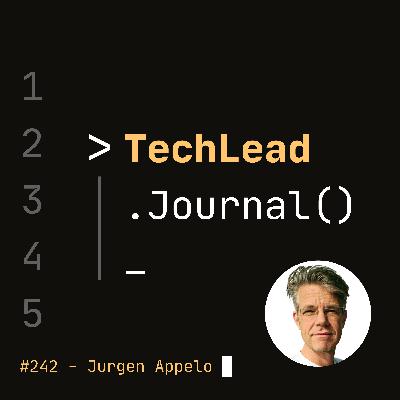
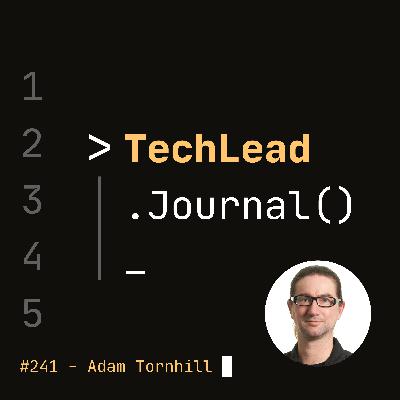
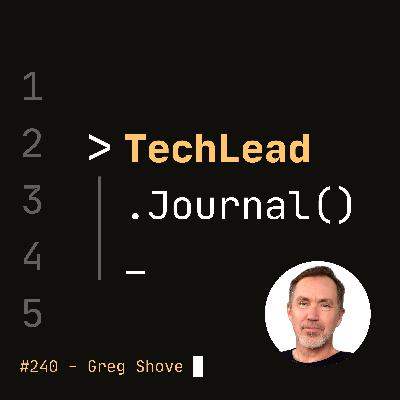
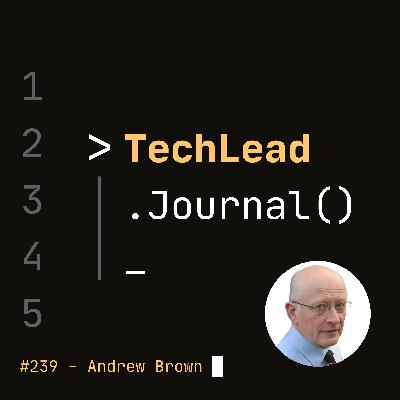
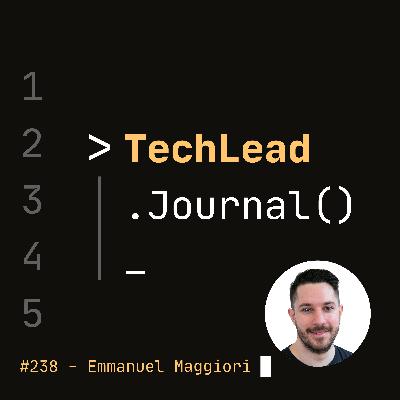
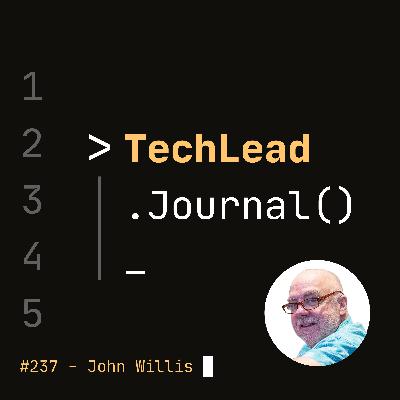
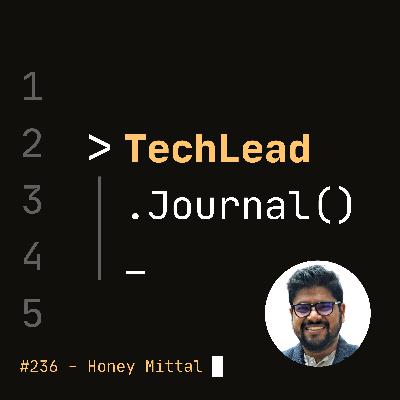
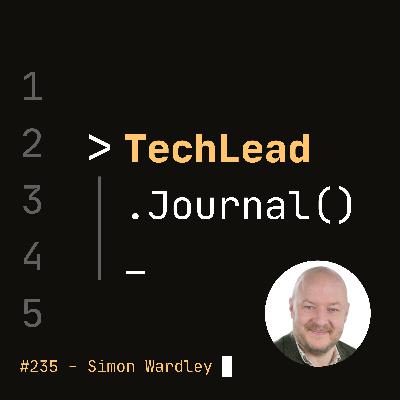
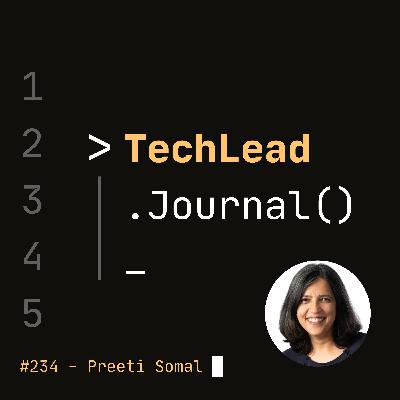
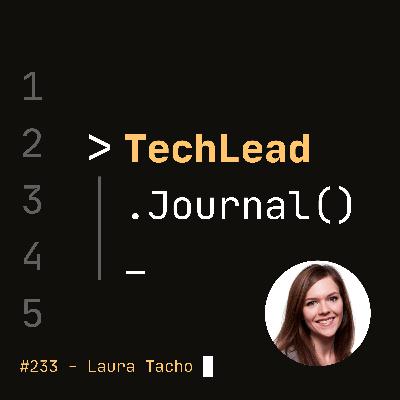
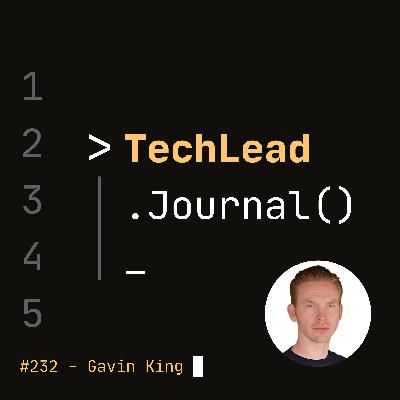
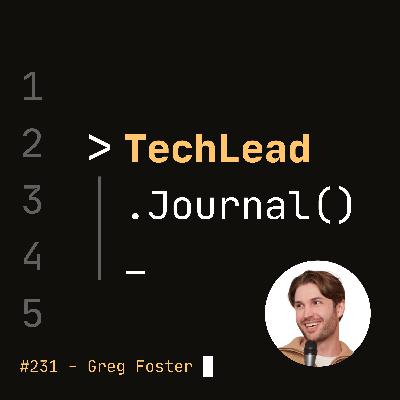
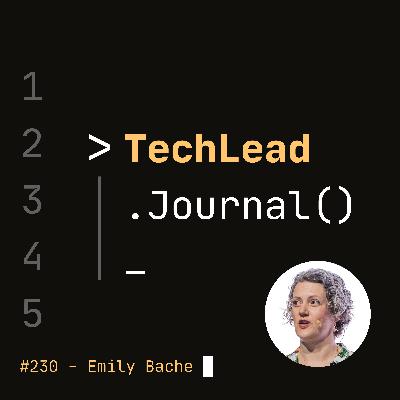
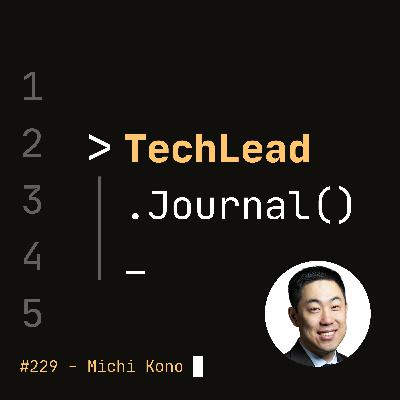
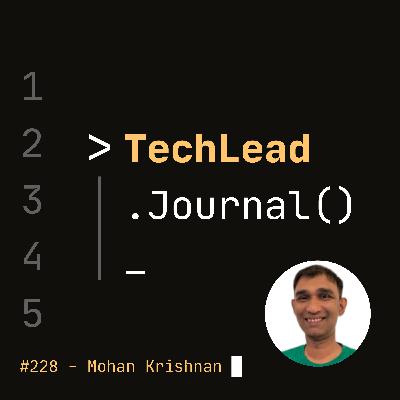
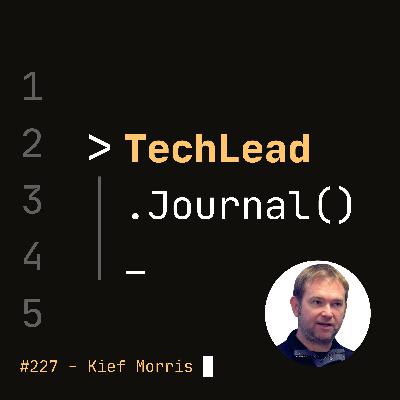
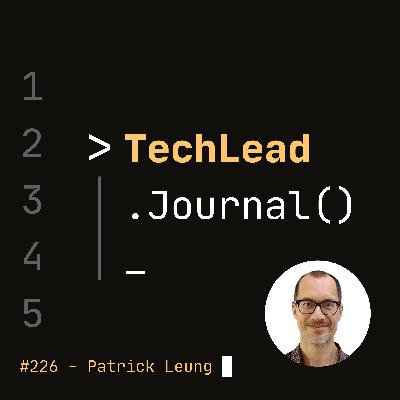
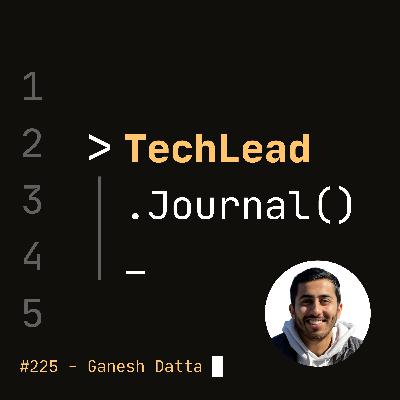
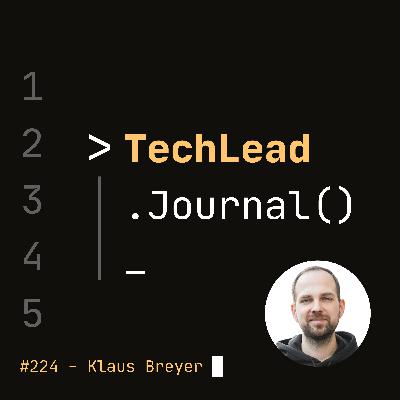
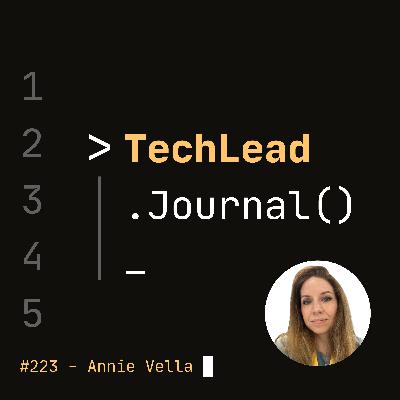



It's a very good session
I don't understand the guess
3:05
Didn't like the audio quality.. 😒
That's true, it's actually important to optimize business processes, and that's the reason I was pretty thorough while looking for good specialists to help me with that. I managed to discover https://processmix.com/ not so long ago, and I have to say that working with these professionals was one of the best decisions for my project.
Um dos melhores podcasts pra explicar DDD..